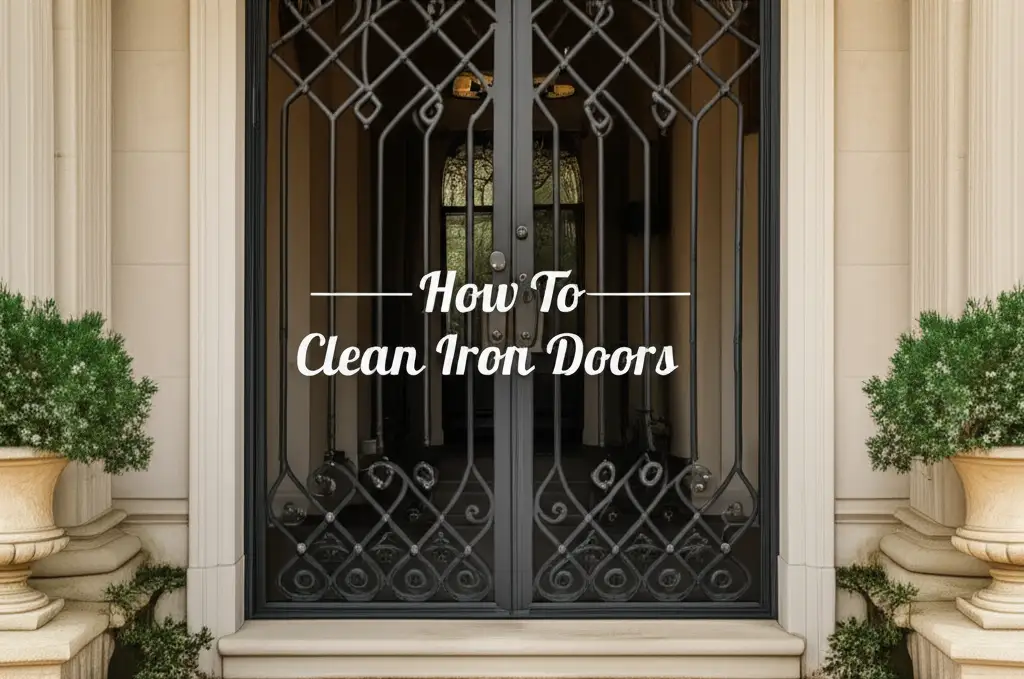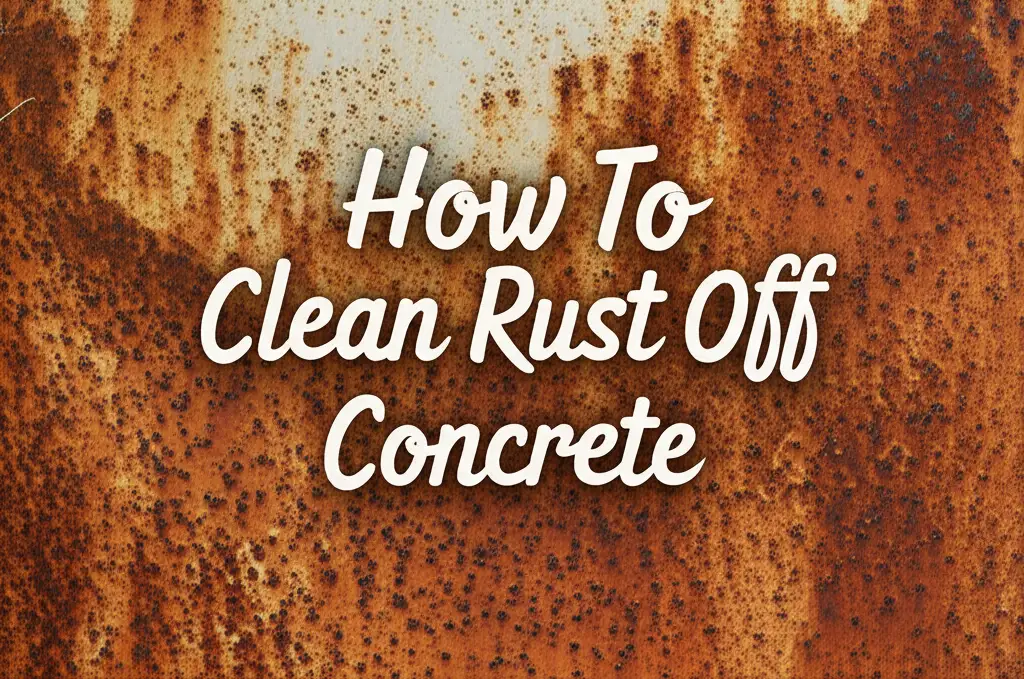· Home Maintenance · 6 min read
How To Clean A Wrought Iron Door?

How To Clean A Wrought Iron Door?
Have you noticed your beautiful wrought iron door looking a little dull or showing signs of rust? Don’t worry, restoring its original charm isn’t as difficult as you might think. Cleaning a wrought iron door regularly protects it from the elements and keeps it looking fantastic for years to come.
This article will guide you through everything you need to know about cleaning your wrought iron door, from gathering supplies to preventing future damage. We’ll cover gentle cleaning methods, tackling rust, and protective measures to keep your door looking its best.
Takeaway:
- Regular cleaning prevents rust and damage.
- Mild soap and water are usually sufficient for routine cleaning.
- Rust requires specific removal techniques and preventative measures.
- Protecting the door with wax or sealant extends its lifespan.
Quick Answer:
To clean a wrought iron door, start by brushing off loose debris. Then, wash with mild soap and warm water, rinse thoroughly, and dry completely. For rust, use a wire brush, rust converter, or vinegar solution, followed by a protective coating like wax or sealant.
Why Regular Cleaning Matters for Wrought Iron Doors
Wrought iron doors are stunning architectural features, but they’re also susceptible to rust and weathering. Unlike other metals, wrought iron contains a very low carbon content, making it prone to oxidation when exposed to moisture and air. Regular cleaning is the first line of defense against these issues. It removes dirt, grime, and pollutants that can accelerate corrosion. Think of it like skincare for your door – consistent care keeps it healthy and looking its best.
- Prevents Rust: Removing dirt and moisture prevents rust from forming.
- Extends Lifespan: Regular maintenance significantly extends the door’s life.
- Maintains Appearance: Cleaning keeps the door looking beautiful and welcoming.
- Avoids Costly Repairs: Proactive cleaning prevents minor issues from becoming major, expensive repairs.
Gathering Your Cleaning Supplies
Before you begin, having the right tools and supplies will make the job much easier. You likely already have many of these items around the house. A little preparation goes a long way in achieving a sparkling clean door. Here’s a checklist of what you’ll need:
- Soft-bristled brush: For removing loose dirt and debris.
- Mild dish soap: Avoid harsh chemicals that can damage the iron.
- Warm water: For mixing with the soap.
- Two buckets: One for soapy water, one for rinsing.
- Soft cloths or sponges: For washing and drying.
- Wire brush (for rust): To remove stubborn rust spots.
- Rust converter (for rust): To chemically treat remaining rust.
- White vinegar (for rust): A natural alternative to rust converters.
- Protective wax or sealant: To prevent future rust and weathering.
- Gloves: To protect your hands.
The Gentle Cleaning Process: Routine Maintenance
For regular maintenance, a gentle approach is all you need. This process removes everyday dirt and grime without damaging the iron. It’s best to do this every few months, or more often if your door is exposed to harsh weather conditions. This routine cleaning will keep your door looking its best with minimal effort.
- Brush Away Debris: Start by using the soft-bristled brush to remove any loose dirt, leaves, or cobwebs.
- Prepare Soapy Water: Mix a small amount of mild dish soap with warm water in one of the buckets.
- Wash the Door: Dip a soft cloth or sponge into the soapy water and gently wash the entire surface of the door. Pay attention to any intricate details or carvings.
- Rinse Thoroughly: Use the second bucket filled with clean water to rinse away all the soap residue. Ensure no soap remains, as it can attract dirt.
- Dry Completely: Use a clean, dry cloth to thoroughly dry the door. Leaving it wet can contribute to rust formation.
Tackling Rust: Removal and Treatment
If you spot rust on your wrought iron door, it’s important to address it promptly. Rust not only looks unsightly but also weakens the metal over time. There are several methods for removing rust, depending on the severity of the problem. Let’s explore a few options.
Using a Wire Brush
For light surface rust, a wire brush is often sufficient. Scrub the rusted areas firmly with the wire brush, applying consistent pressure. This physically removes the rust, revealing the metal underneath. Be careful not to apply excessive force, as you could scratch the iron.
Applying a Rust Converter
Rust converters chemically change the rust into a stable, paintable surface. Follow the manufacturer’s instructions carefully, applying the converter to the rusted areas. This is a great option for more stubborn rust that doesn’t come off easily with a wire brush. You can find these at most hardware stores.
Vinegar Solution
White vinegar is a natural and effective rust remover. Mix equal parts white vinegar and water in a spray bottle. Spray the solution onto the rusted areas and let it sit for 30 minutes to an hour. Then, scrub with a wire brush and rinse thoroughly with water. This is a gentler option, ideal for less severe rust. If you’re looking for more information on cleaning with vinegar, you might find this article helpful: https://beacleaner.com/how-to-clean-hardwood-floors-with-vinegar/.
Protecting Your Door: Waxing and Sealing
Once your wrought iron door is clean and rust-free, it’s time to protect it from future damage. Applying a protective coating will help prevent rust and weathering, keeping your door looking beautiful for years to come. This step is crucial for long-term maintenance.
- Waxing: Applying a coat of carnauba wax provides a protective barrier against moisture and UV rays. Apply the wax with a soft cloth, following the manufacturer’s instructions.
- Sealing: A clear sealant specifically designed for metal provides a more durable layer of protection. Apply the sealant evenly, ensuring complete coverage.
- Regular Reapplication: Reapply the wax or sealant every 6-12 months, or as needed, to maintain optimal protection.
Frequently Asked Questions (FAQ)
Q: Can I use bleach to clean my wrought iron door?
A: No, avoid using bleach. Bleach is highly corrosive and can damage the iron, leading to further rust and deterioration. Stick to mild soap and water for routine cleaning.
Q: How often should I clean my wrought iron door?
A: Clean your door every few months for routine maintenance. If you live in a harsh climate or near saltwater, you may need to clean it more frequently.
Q: What’s the best way to prevent rust from returning?
A: Regularly clean your door, apply a protective wax or sealant, and ensure proper drainage around the door to prevent water from pooling.
Q: Can I paint over rust on my wrought iron door?
A: While you can paint over rust, it’s crucial to treat the rust first with a rust converter or remover. Painting over rust without treatment will only hide the problem temporarily, and the rust will continue to spread underneath the paint.
Conclusion
Cleaning a wrought iron door doesn’t have to be a daunting task. With the right supplies and a little effort, you can keep your door looking beautiful and protect it from the elements. Remember, regular cleaning is key to preventing rust and extending the lifespan of your door. By following the steps outlined in this guide, you can ensure your wrought iron door remains a stunning focal point of your home for years to come. Don’t hesitate to tackle rust promptly and always finish with a protective coating. If you’re looking for more ways to keep your home looking its best, check out our guide on https://beacleaner.com/how-to-clean-vinyl-plank-flooring/ for tips on maintaining your floors!
- wrought iron care
- door cleaning
- rust removal




